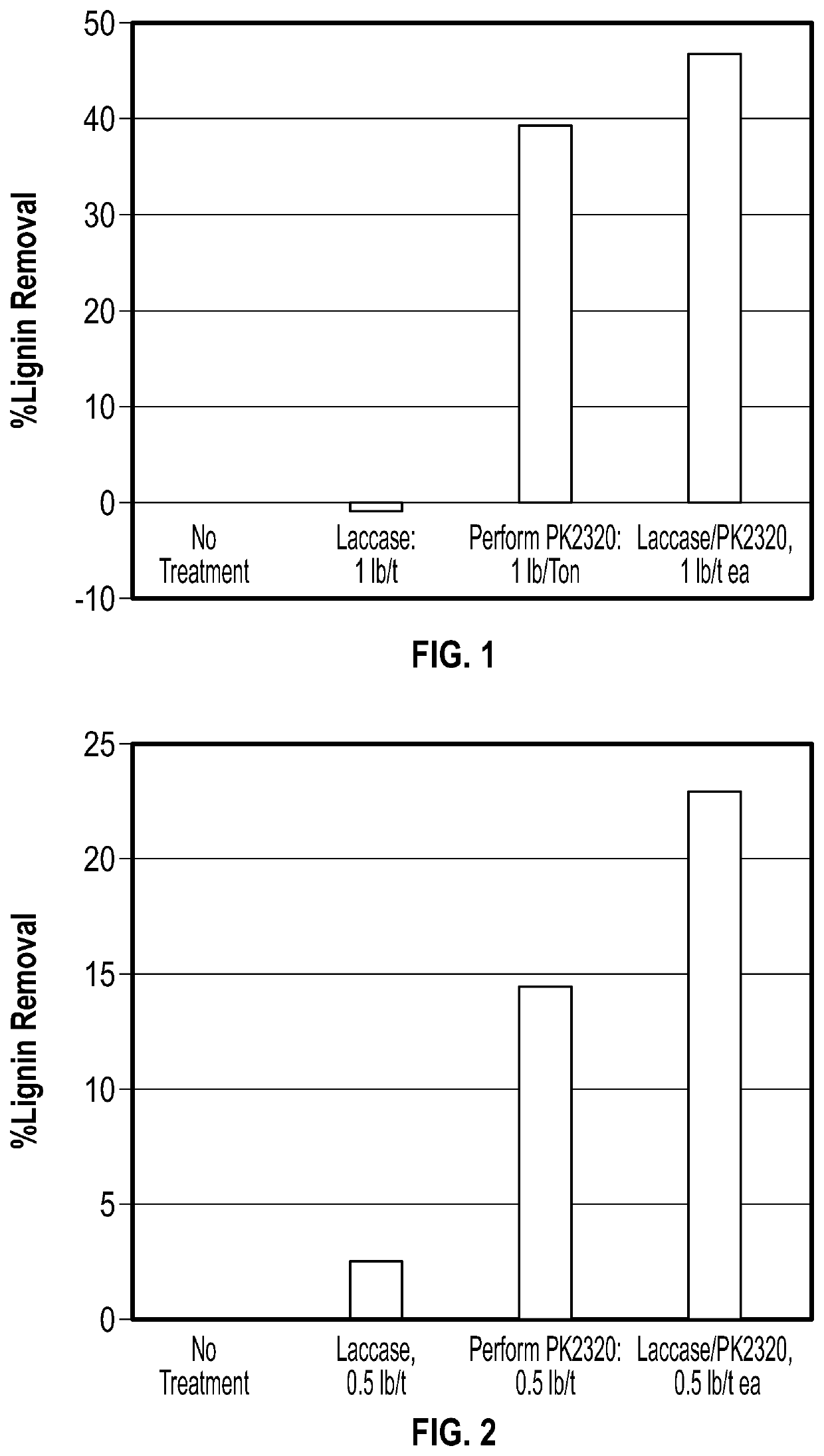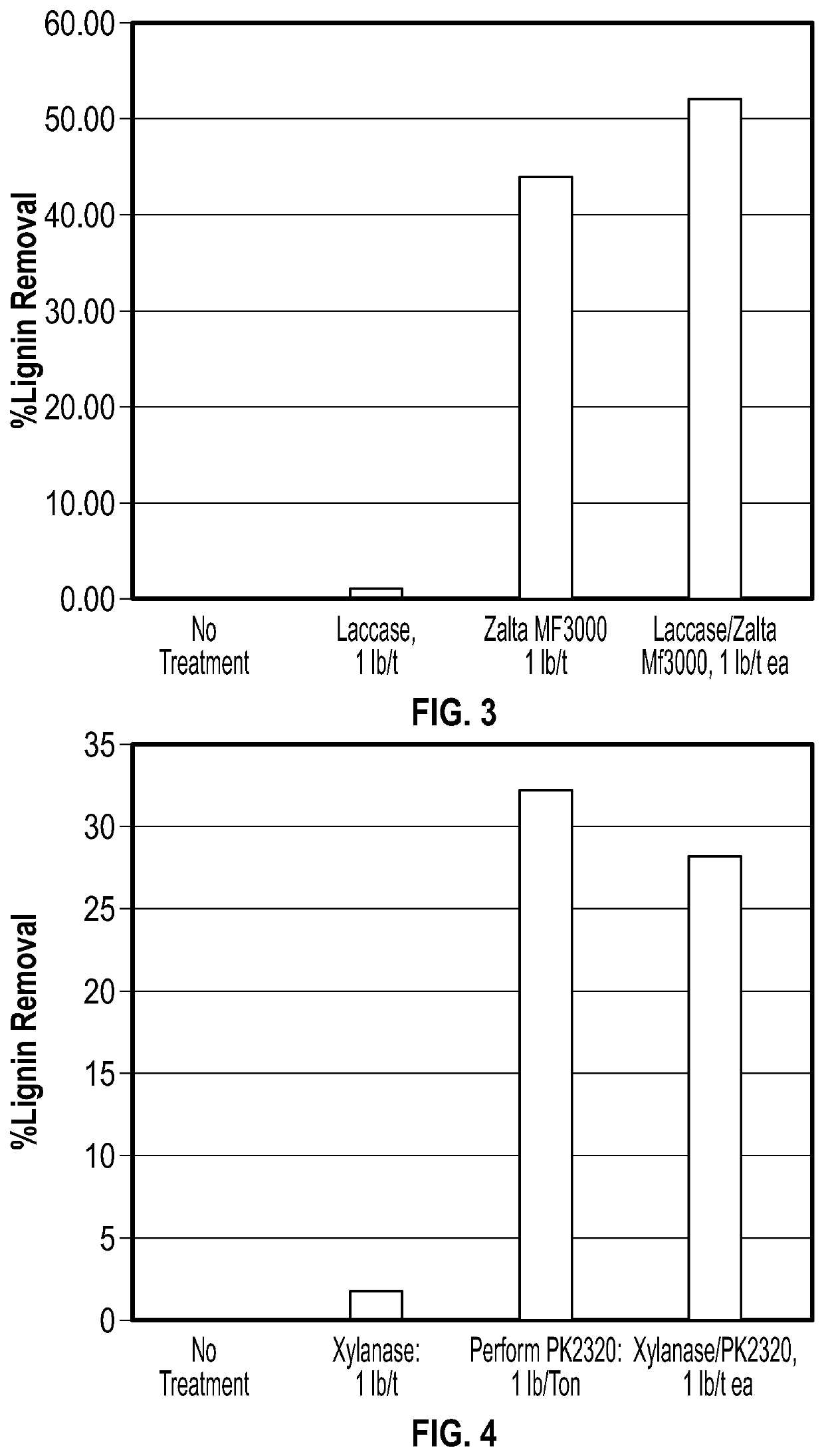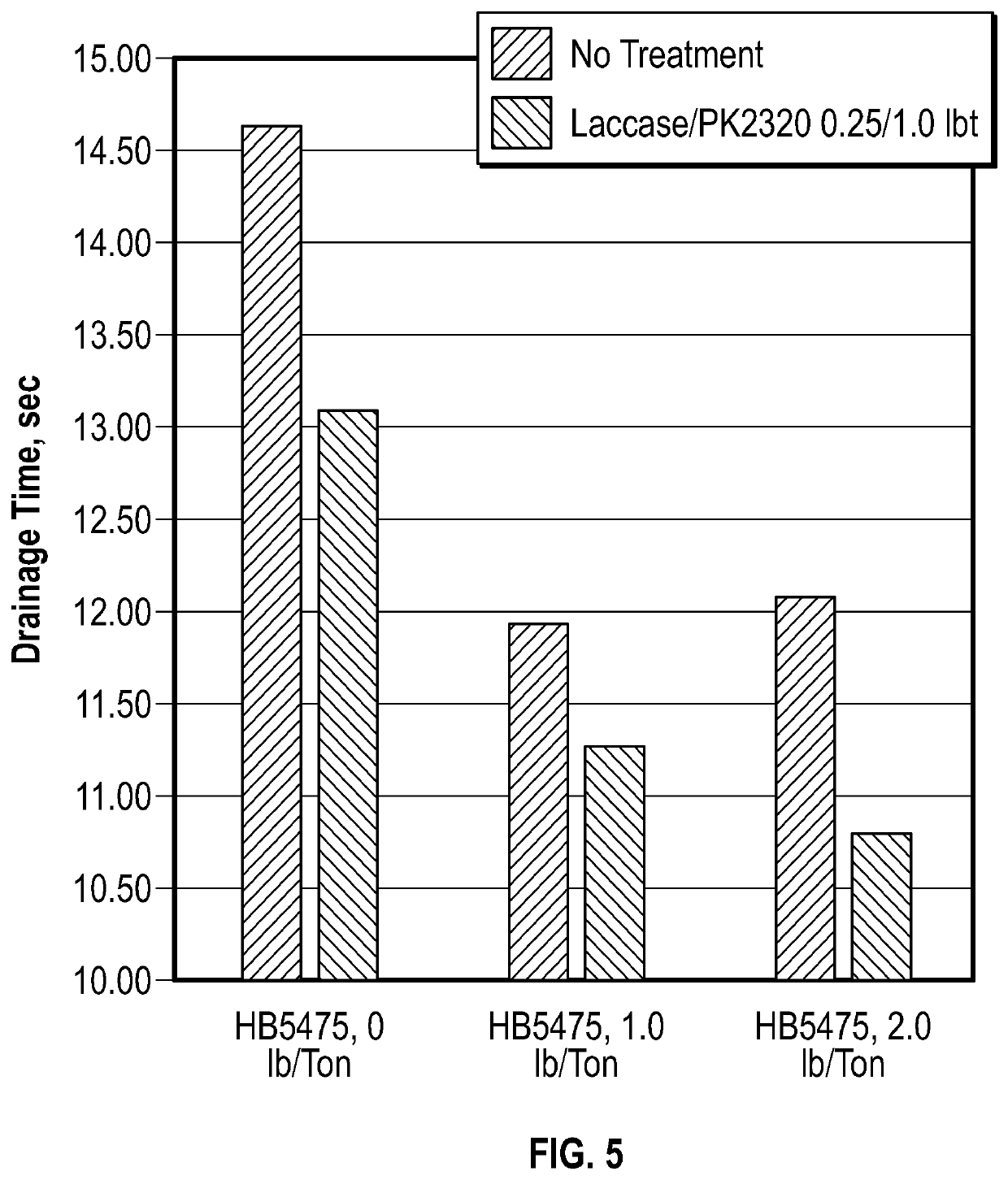Chemical efficiency increase in papermaking process
a papermaking process and chemical additive technology, applied in the field of increasing the efficiency of chemical additives in papermaking systems, can solve the problems of increasing exponentially, increasing costs, and many problems in paper production, and achieve the effects of reducing the amount of soluble lignin, and increasing the chemical efficiency of chemical additives
- Summary
- Abstract
- Description
- Claims
- Application Information
AI Technical Summary
Benefits of technology
Problems solved by technology
Method used
Image
Examples
example 1
[0062]Testing was conducted in fiber / water slurry to imitate conditions of OCC thick stock treatment. Synthetic white water was made according to the recipe described above with the resulting conductivity of 4700 uS / cm and pH 6.2. To the synthetic white water, dewatered OCC fiber of 25% OD consistency was added in the amounts that the resulting consistency of fiber slurry was close to 4%. The amount of soluble lignin was measured in the thick stock and it was 300 ppm. Then the resulting fiber slurry was divided into four separate containers, treatments added and then slurries were placed in 45° C. bath and moderately mixed for 30 minutes. After the treatment fiber slurries were filtered thorough 355 micron sieve the filtrates were diluted 10 fold and analyzed by UV-VIS spectrometry at 280 nm for soluble lignin content. Based on UV-VIS absorbance values % lignin reductions were calculated.
[0063]Addition of laccase only (1 lb / ton) did not result in any significant changes in soluble l...
example 2
[0067]A combination of Zalta MF 3000 (high molecular weight polyethylene oxide, PEO dispersion product) and laccase was tested. Addition of laccase only (1 lb / ton) did not result in any significant changes in soluble lignin content (2.1%), see, e.g. results in Table 3 and FIG. 3. Addition of PEO polymer product (1 lb / ton) resulted in 44.2% reduction of lignin in soluble phase. Laccase treatment combined with addition of PEO polymer product (1 lb / ton each) resulted in additional enhancement of lignin removal to 52.1%. The combination of polyethylene oxide polymer and laccase enzyme are synergistic in lignin removal from soluble phase. As set forth below, Table 3 includes data related to removal of soluble lignin by application of laccase enzyme and Zalta MF3000 (polyethylene oxide) polymer product and their combination.
[0068]
TABLE 3% LigninTreatmentAbs @ 280 nmreduction3-1No treatment0.4223-2Laccase, 1 lb / t each0.4132.13-3Zalta MF3000, 1 lb / t each0.23544.33.4Laccase / Zalta MF3000, 1 l...
example 3
[0069]This experiment shows that the effect of laccase polymer is very specific and that other enzymes combined with various polymers do not work and do not enhance lignin removal. For example, the method of Example 1 was repeated except xylanase was used instead of laccase. As in Example 1 above, both enzyme and polymer were tested at 1 lb / ton. Addition of xylanase only (1 lb / ton) did not result in any significant changes in soluble lignin content, e.g. as shown in the results in Table 4 and FIG. 4. Addition of Perform PK2320 (1 lb / ton) polymer product resulted in 32% reduction of lignin in soluble phase. Xylanase treatment combined with addition of Perform PK2320 (1 lb / ton each) did not result in any additional enhancements of lignin removal. It dropped by 3.5% with xylanase addition. Xylanase did not help in removing soluble lignin from process water. Xylanase does not enhance lignin removal when combined with polymer. As set forth below, Table 4 includes data related to removal ...
PUM
| Property | Measurement | Unit |
|---|---|---|
| weight average molecular weight | aaaaa | aaaaa |
| molecular weight | aaaaa | aaaaa |
| pH | aaaaa | aaaaa |
Abstract
Description
Claims
Application Information
 Login to View More
Login to View More - R&D
- Intellectual Property
- Life Sciences
- Materials
- Tech Scout
- Unparalleled Data Quality
- Higher Quality Content
- 60% Fewer Hallucinations
Browse by: Latest US Patents, China's latest patents, Technical Efficacy Thesaurus, Application Domain, Technology Topic, Popular Technical Reports.
© 2025 PatSnap. All rights reserved.Legal|Privacy policy|Modern Slavery Act Transparency Statement|Sitemap|About US| Contact US: help@patsnap.com



